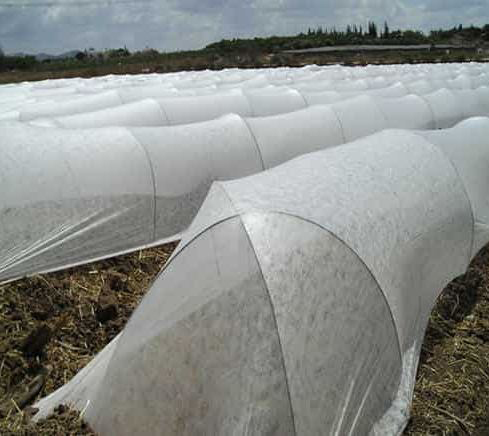
Non-Woven Industry DevelopmentNon-woven fabric is a product that emerged out of the petrochemical sector following the invention of plastic cloth (film). It is less heavy than plastic cloth and permits better air circulation. It is frequently used in medical and sanitary items like sanitary napkins towels, facial towels, filters, etc. Later, it was developed and applied in engineering. Non-woven fabrics are used in the production of vegetable products to protect against damaging the cold. While non-woven fabric production is more complicated than plastic film, the raw materials are essentially the same. These materials include PE (polyvinylchloride), EVA, Ethylene Vinyl Acetate copolymer), EVA and PVA (polyvinyl alcohol). The typical plastic film is formed into a thin film melting the plastic and then inflating it. The film is continuous and it can stretch to infinity. The film does not have pores. The film is impermeable , and prevents any movement or exchange of molecules. After the growth of the industry of textiles, artificial chemical fibres made of the mentioned ingredients became the new darlings of the industry of textiles. The chemical fibers, however are still able to be transformed into cloth using traditional warp-weft weaving. The non-woven material is made by connecting fibers in the same plane and at different angles across all directions. It's not possible to use traditional weaving and warp methods. It's more durable than traditional woven fabric and is made of raw materials in just one day. It is less expensive than traditional weaving, which requires drawing fibers into yarn and then weaving. The last few years have seen the widest range of non-woven fabrics used in the fashion industry. The advancement of technology for production and the advancement of material science has made non-woven fabric more flexible and widely used over the past few years. There are numerous different materials and products found in everyday life. The rise in non-woven fabric usage in agriculture is due to its lightweight, easy-of-production, diversity, cost effectiveness and wide variety of uses. Follow this non woven weed control fabric for more information.

Applications of Non-Woven Fabrics in Agricultural IndustryNon-woven fabrics were first applied to agriculture in Europe in 1978 to keep carrots warm for early harvesting and to guard against tomato leaf virus and whiteflies. Non-woven fabrics are utilized to mulch tomatoes, sweet peppers and sweet potatoes, and also carrots, root vegetablesand carrots. They also assist in the growth of other vegetables such as cabbage, lettuce, lettuce, and radishes. It is used to preserve heat and for early harvesting. Non-wovens can be used to cover grass-proof mats , and improve the soil's temperature. Short fiber is also utilized to make water-absorbing blankets that are affixed to nursery beds so that the roots can completely absorb water. They can also be used to make turf or directly used as garden grassland. They are utilized to plant large trees, such as garden trees and fruit trees. In Taiwan along with the previously mentioned purposes Non-woven fabrics are also employed in crop covering. They are extensively used to control large greenhouses' climate and save energy. Canopy curtains are double-layered , and help reduce heat absorption and radiation at night. To shade and protect bulbs of cauliflower, high-density nonwoven spun-bonded TAVIK fabrics were employed. Farmers quickly adopted it due to its outstanding shading capability as well as its low thermal conductivity, an easy recycling process and its ease of acceptance. Later, it was gradually applied to the heat preservation and pest-proofing of leaf vegetables, as well as the shade and heat preservation and cultivation of pineapples and fruit trees. Due to Taiwan’s unique climate and ecology the development of the industry in non-woven is slow. Taiwan non-woven fabric manufacturers continue to invent non-woven technology that focuses on air permeabilityand water absorption, as well as water repellency of non-woven materials. It is used in storage and preservation of agricultural goods. Follow this pp agricultural nonwoven fabric for more info.
